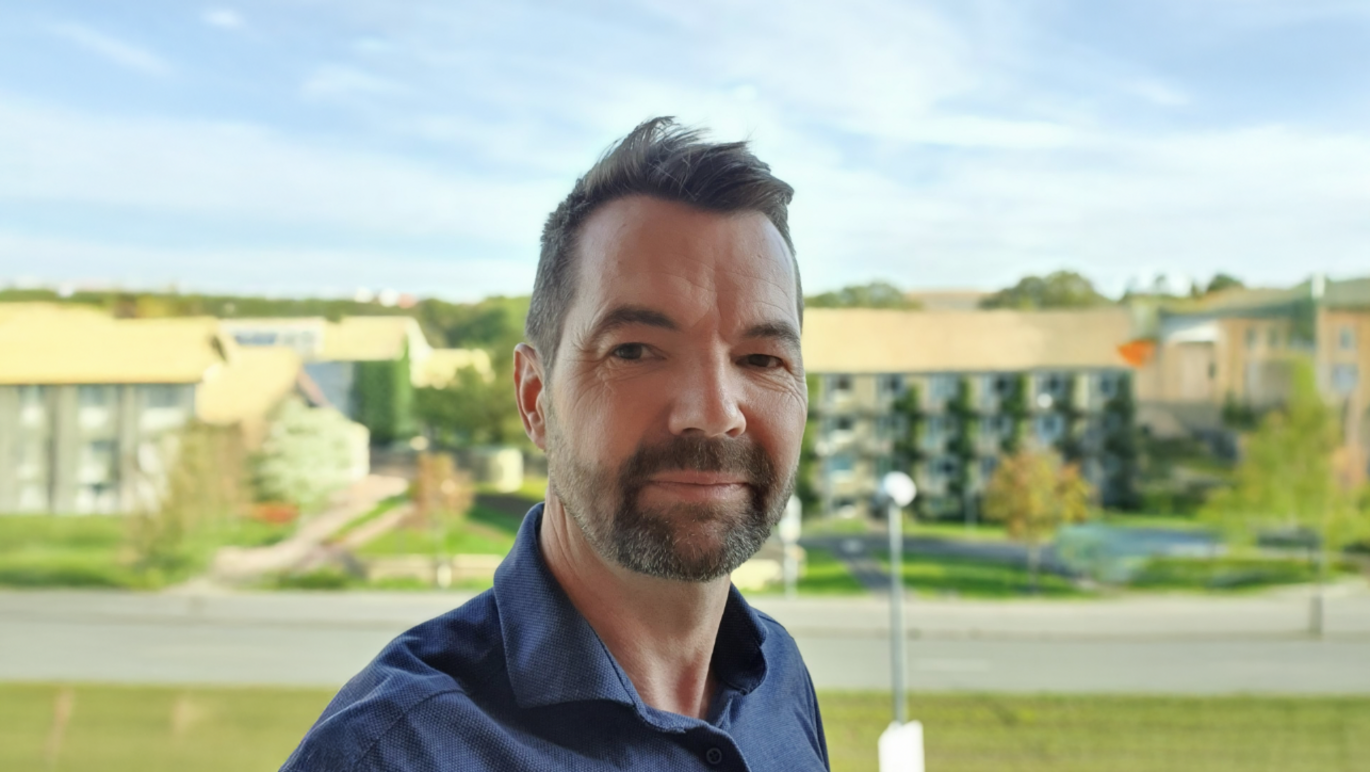Palle's AI app can find hidden fingerprints in unsolved criminal cases
Associate Professor at the Department of Clinical Medicine has helped develop an AI-based analysis method that, according to him, opens up a "completely new toolbox" for investigators.

Article series on AI in health research
Artificial intelligence is well underway in transforming health research - but how is the technology used in practice, and what challenges come with it?
Inside Health focuses in an article series on how researchers at the faculty work with artificial intelligence.
We would like to hear from you if you use AI in your work and would like to share your experiences in the newsletter.
Contact Jakob Binderup
Overlapping fingerprints at crime scenes have long been a challenge for police investigators. When two or more prints lie on top of each other, it requires many hours of meticulous manual work to separate them - if it's possible at all.
In this fourth episode of Inside Health's series on artificial intelligence in health research, we meet Associate Professor Palle Villesen from the Department of Clinical Medicine, who has helped develop an AI method that can automatically separate these complex prints and potentially help police solve unsolved cases.
How did you end up working with AI?
I'm a biologist by background and was involved from the beginning at the Bioinformatics Research Center at AU many years ago. I switched to the Department of Clinical Medicine because I wanted to do something that could be used for something concrete. I have worked with forensic pathologists for many years now, because they had an area driven by very simple analysis methods. It's hands-on work, and we help develop methods for court cases and investigations.
How do you use AI concretely in your work?
We work with fingerprints and blood analyses together with forensic chemists and the blood bank. All that kind of data is complex – thousands of molecules – and filled with noise signals from sensitive equipment. Here AI can handle patterns that we cannot see. For example, we have developed a method to analyze overlapping fingerprints, where AI can automatically separate two fingerprints that lie on top of each other. Previously, this required many hours of manual work.
How far along are you with implementing the method?
I have created an app for the Institute of Forensic Medicine that makes the "development" of molecular photos easier. This will mean that police can potentially get new fingerprints developed in cases they couldn't solve before – especially when fingerprints are damaged or overlap each other. It opens up a completely new toolbox for investigations.
The consequences are serious if the method makes mistakes. How do you validate the results?
We focus enormously on avoiding what are called false positive results – results that look correct but aren't. When analyzing thousands of molecules, some will randomly appear significant. Therefore, we design AI systems that only make statements when they are certain and report any uncertainty. In investigations, police actually also prefer that we say "we don't dare comment on that" rather than get an answer we're not 100 percent sure about.
How does Denmark stand compared to other countries in developing AI methods in this field?
Denmark has an incredibly large advantage thanks to our extensive health registries and biobanks. The Danish blood donor study is something we should highlight much more. We have blood samples from people before they became ill, combined with their medical history. This is completely unique and gives us opportunities that researchers in the USA and China don't have. This means that despite our modest size, Denmark is among the world's leading countries in this area.
What are the biggest challenges for researchers like you who develop these methods?
GDPR legislation. It's obviously important that it's in place, but it's enormously difficult to get access to data, even though the research is important. There are few groups that already have access to data, and they hold onto it tightly, since it requires extreme patience and very great effort to get access to data.
What's the solution?
I sit on a working group focused on artificial intelligence and data management, and among other things we have proposed appointing a single contact person at AU and Central Denmark Region that researchers can approach for help with legal issues and project startup, so that they have the best conditions for getting the green light for their projects, which often require collaboration across organizations.
Do you think AI will revolutionize the medical field, or will it be more of a gradual improvement?
In some areas, it has the potential to revolutionize the sector. Here I'm thinking especially of newly graduated doctors. AI is already now at a level equivalent to a very experienced senior physician when it comes to diagnosis. It's equivalent to a newly graduated doctor being able to get support from a very sharp on-call doctor who can provide a consistent and quick starting point that doctors can then fine-tune. But we must maintain healthy skepticism. It's easy to get caught up in the development because you can do all sorts of things now that seem fantastic. When we say that AI can save money in the healthcare sector, we must also prove that treatment doesn't get worse. We need to measure the effect over many years – not just assume it's there.
Contact
Associate Professor Palle Villesen
Aarhus University, Department of Clinical Medicine – Bioinformatics Unit
Phone: 24471214
Email: palle@birc.au.dk